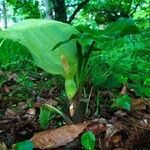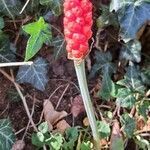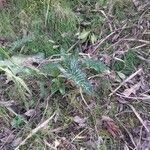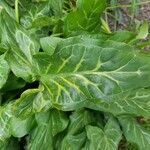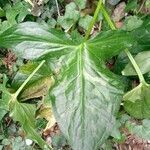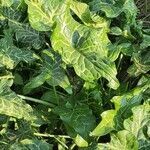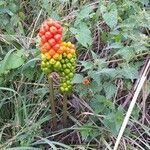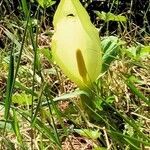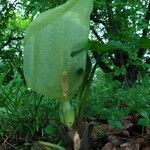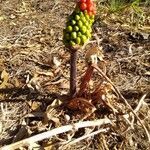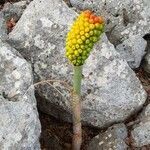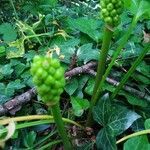Erect tuberous perennials, 25-60 cm high, leaves appearing in late autumn and through winter; flowering in spring, the leafless scape with scarlet berries conspicuous in late summer. Tuber c. 4 cm diam., producing small tubers. Leaves large; laminae hastate, to 30 cm long, dark green with lighter yellow-green midrib and main veins; petioles 20-40 cm long, lower half membranous, sheathing, purple-tinged. Spathe ± translucent, pale whitish-green, purple-tinged near base especially on inside, c. 30 × 15 cm; scape < petiole, greenish to reddish. Spadix ± ⅓ of spathe; basal female zone ± 2 cm long, a few sterile flowers above them; upper male zone c. 0.8 cm long, with narrow band of sterile flowers below terminal, stipitate, yellow sterile appendage. Berries 1 cm diam., bright red.
A bulb plant. It grows 25-30 cm high and spreads 15-20 cm wide. The leaves are glossy and with white veins. They have wavy edges and are shaped like a spear head. The flower has a hood like spathe around a central column. The spathe is 15-30 cm long. It droops at the pointed tip. The fruit are bright orange berries. They are in a fruiting spike 10-15 cm long.
